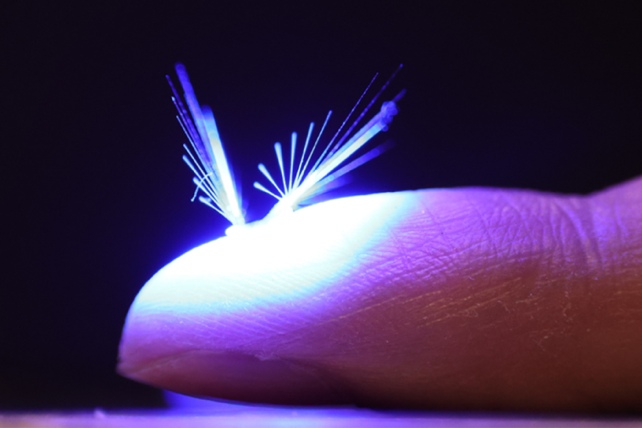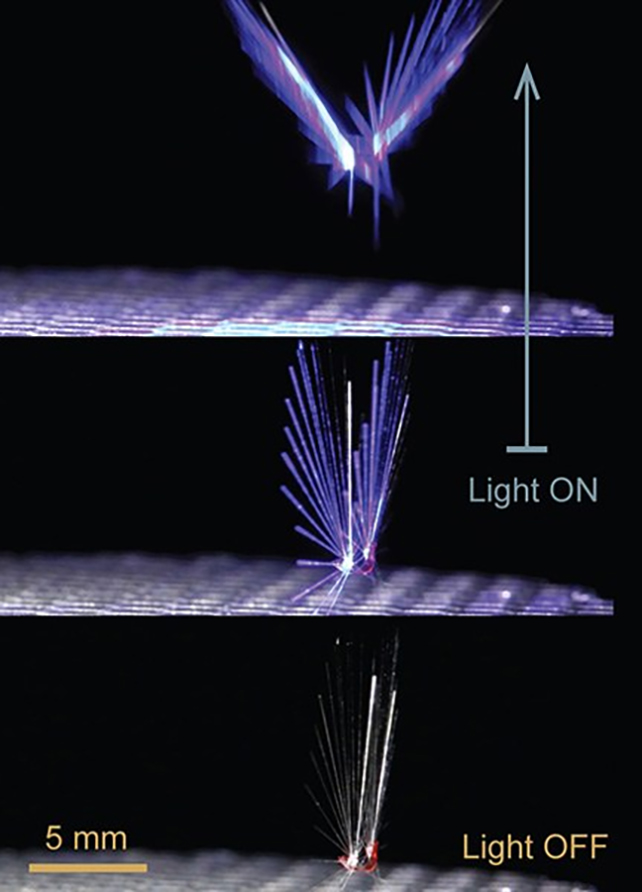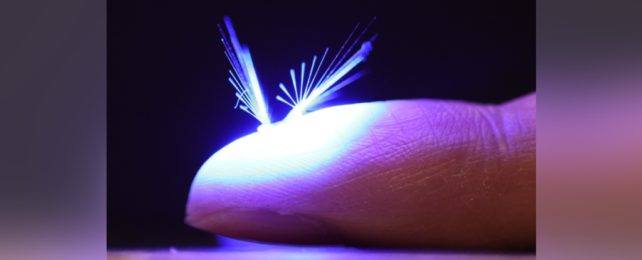Weighing in at just 1.2 milligrams, a new robot called FAIRY – that's short for Flying Aero-robots based on Light Responsive Materials Assembly – is the first flying bot we've seen based on soft materials that respond to light.
The robot was inspired by dandelion seeds, and ultimately it could be used in the same way: its creators are hoping that it might be deployed to help mitigate the loss of pollinators (such as bees) that we're currently seeing in the wild.
Light can be used to get the FAIRY up into the air, and to control the spread of its bristles. After that, the ultra-light bot travels on the wind, and could potentially be dispersed across large distances, just like the seeds that it's based on.

"The FAIRY can be powered and controlled by a light source, such as a laser beam or LED," says micro roboticist Hao Zeng from Tampere University in Finland.
"It sounds like science fiction, but the proof-of-concept experiments included in our research show that the robot we have developed provides an important step towards realistic applications suitable for artificial pollination."
As well as being very light, the FAIRY bot is also very porous in its design, which helps it take to the air. It's also able to create its own vortex ring, just like the dandelion seed, which adds to the aerodynamics and ensures the device can travel long distances without any extra help.
There's some level of control in the wind, as the shape of the flying machine can be adjusted to match – a bit like the sail of a ship. However, it isn't something that can be directly piloted in the same way as a drone, for example.

The robot is made from bristly filament, with the individual fibers measuring a mere 14 microns thick. Connecting the bristles is an actuator, a bendable strip controlled by light that manages the opening and closing of the bot.
"Superior to its natural counterparts, this artificial seed is equipped with a soft actuator," says Zeng. "The actuator is made of light-responsive liquid crystalline elastomer, which induces opening or closing actions of the bristles upon visible light excitation."
After testing them in wind tunnels and under laser lights, Zeng and his colleagues imagine millions of these artificial 'seeds' carrying pollen on the wind, with light used to steer them towards trees needing to be pollinated. However, plenty more work needs to be done before that can happen.
The researchers are looking at ways to more precisely control where these FAIRY bots land, and considering how they might be made biodegradable too. The project is scheduled to continue its investigations until August 2026, having started in September 2021.
Dandelion seeds are able to travel ten, sometimes even a hundred kilometers in hot, dry, windy conditions thanks to their ingenious design, some of which has been borrowed here. With no battery or direct power source needed, these FAIRY bots could do the same.
"This would have a huge impact on agriculture globally since the loss of pollinators due to global warming has become a serious threat to biodiversity and food production," says Zeng.
The research has been published in Advanced Science.
